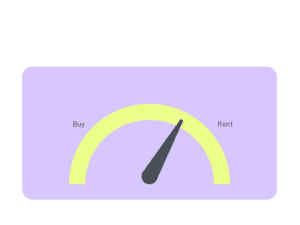Did You Like the Post? Share it:

The use of inventory counting methods is a great way for your rental business to accurately count its stock in the event of loss or theft.
It is crucial to make sure your inventory is up to date. If not, you could easily experience sudden equipment shortages, forcing you to look for substitutes or sub-rentals.
With this precise count, you can assess the effectiveness of your inventory systems and, if not, put new controls or procedures in place to improve productivity and lower losses.
Some businesses currently perform routine physical inventory counts, while others might be unsure about where to begin.
Here we will discuss the process of inventory counting, along with the various methods of inventory counting.
The inventory counting process is a technique for keeping track of what is currently on hand by counting every item. This precisely-planned procedure includes separating, counting, and reporting the outcomes. So, inventory counting is done to figure out how much actual stock there is.
With the aid of a proper warehouse management system, eCommerce enterprises should frequently check what is in their warehouses. A corporation may clearly see the inventory and assets it has and learn how to quickly locate them by conducting an inventory count. It also establishes the accuracy of the inventory you believed you had. It is typical for the book balances and the real inventories to differ.
Businesses in the event sector may easily experience year-round busyness. Finding the time to complete the optimization of your inventory count may become a little more challenging as a result.
Cycle counting, spot counting, commonly referred to as ad hoc or blind counting, and tag counting are three of the most popular counting methods.
Let’s review the differences between the various forms of counting and the optimal counting technique for each circumstance.
Cycle counting involves numbering in cycles, as the name suggests. You count your stuff in sections rather than all at once.
Every month, week, or day, a different area of the store or warehouse is counted. Product types, product groups, and warehouse/store zones may all be used as bases. You can choose a different cycle length for each differentiator as well.
For instance, it is advisable to count little, quickly moving items more frequently than large kitchen appliances.
Cycle counting could eliminate the need to have to perform that terrifying annual count, which is usual for most businesses.
Instead of concentrating all your efforts on that one weekend, you can spread out the labor across the entire year by using the cycle counting method.
Cycle counts are simpler to schedule, and your ERP may even generate counting orders based on your criteria and stock changes.
Additionally, this method will provide you with intriguing and comprehensive reports that you can compare not just to prior years but also to various time periods within those years.
Planning is essential in this situation because there is always a chance of missing items when constructing the counting orders when not counting everything.
Another drawback is that counting becomes ingrained in your employees’ daily routines, making it simple for them to become sidetracked and either forget to count anything or count it twice.
Ad-hoc counting is frequently started by the user and is not planned, making it useful in unusual circumstances.
Your system must be able to compare the quantity that was tallied to the data stored in the software. Ad-hoc counting is sometimes referred to as spot or blind counting because it typically takes place in unscheduled, tiny store/warehouse zones or locations.
Let’s say you counted a zone, but a few days later the system malfunctioned because of someone or some process. Instead of waiting for the next cycle count, you can just construct a new, empty order and begin adding counted items to it.
You have more flexibility with ad-hoc counting to handle emergencies and get around the problems with poor cycle count planning.
Ad-hoc counting analysis and results may enable you to precisely modify your cycle count plan. Never underestimate the importance of the human element in unforeseen circumstances.
The difficulty in this situation is the same as the benefit, which is the human element. Even when they recognize a need for it.
If inventory counting is not a scheduled, regular event, the accuracy and timeliness of reports may suffer using the ad hoc approach.
The personnel of the store or warehouse should physically tag each item prior to tag counting. The worker must complete the required slots on the tag with the item ID, counted quantity, and other pertinent information during counting.
Some tags have two sides, allowing an additional worker to check the data and, if necessary, fill in the adjustment on the second side.
These tags are gathered and added to the system as journals after the counting procedure is complete.
Tag counting is a great option for bulk warehouse zones or retailers, which frequently lack spaces suited for a true warehouse.
Using scanners while counting is an even better strategy. The item can then just have the physical tag attached so that it can be recalled after it has been counted after the tag ID, item, and quantity have been scanned.
There will be no need to manually enter the journals, they will be created right away. When there are numerous objects and no places, keeping track of the counting procedure is challenging.
In this case, tags provide visual information about what is tallied and what is not, resolving the problem.
Although tag counting may not be appropriate for all types of businesses, it is unquestionably one of the greatest inventory counting methods because it offers transparency, independence, and precision.
We have discussed a few inventory counting methods in the previous section which will aid you in monitoring your stock levels.
When deciding how frequently to do your count, you have a few options: annually, biannually, or more frequently if you’re using cycle counting.
Depending on whether an organization caters mostly to festivals, weddings, conferences, etc., you should determine the ideal time to keep track of your inventory. Most significantly, the inventory counting methods will differ for each organization.
If your business provides services for a variety of live events, it could appear as though there are constant activities going on and you never have free time.
As a result, it may be challenging to entirely halt operations or locate quiet periods while business is booming, but that’s okay. Find a day or an afternoon when you are not scheduling lots into or out of the warehouse or planning new initiatives.
If that’s not possible, make sure that whenever an item is required somewhere else, counters are manually informed during the inventory count.
First and foremost, we advise using rental management software to keep track of your inventory and plans. By having a system built to help with the counting process, you can be sure that your inventory counts, including those for items presently in use or undergoing maintenance, are up to date.
If you are using Excel or pen and paper, it’s possible that your lists are out-of-date and do not take into account the modifications you have previously made to the inventory.
Due to the absence of manual spreadsheets and hand-written notes, software systems can greatly speed up the inventory counting method.
Additionally, most software actively notifies users when there are discrepancies in inventory counts throughout the process, eliminating the need for manual computations.
Related For You: How To Keep Track Of Equipment Inventory & Optimizing Revenue
It is important to perform routine inventory counts even if you have an inventory management system in case certain procedures are not operating as effectively as they should.
According to market research,
“After the COVID-19 pandemic, the North American equipment rental industry’s revenue rose by 4% in 2021. In 2022, it’s anticipated that the North American equipment rental market will continue to improve and see revenue growth of 10%.” Source
Inventory counting methods assist you in reducing unexpected shortages and identifying which internal procedures need to be changed to enhance your business operations as a whole.
In addition to managing your complete inventory, RentMy makes it simple for you to perform an inventory count by providing you with a section specifically for that purpose and immediately notifying you if there are any shortages or overages.
Your warehouse operations’ lifeline is inventory management. An effective inventory counting method helps to simplify and streamline your whole in-store and warehouse operations.
Inventory management is undoubtedly difficult given the rising customer demands and sophisticated competitors in the market. Stock or inventory counting method is nevertheless essential for the essential inventory procedure without which your company cannot succeed.

In the dynamic landscape of retail and consumer preferences, businesses must constantly innovate to stay ahead. One strategy gaining popularity is the integration of rental
Ready to bring Enterprise-scale equipment rental management? Learn how RentMy has delivered Enterprise Equipment Rental Inventory Solutions since 2008. Pick the trusted solution to offer equipment rentals on your terms and compliant with your processes.

Online booking, delivery, packages and everything else you need to manage and grow your rental company
Congratulations!
Check Your Email (Including your Spam Folder) to Activate Your Account